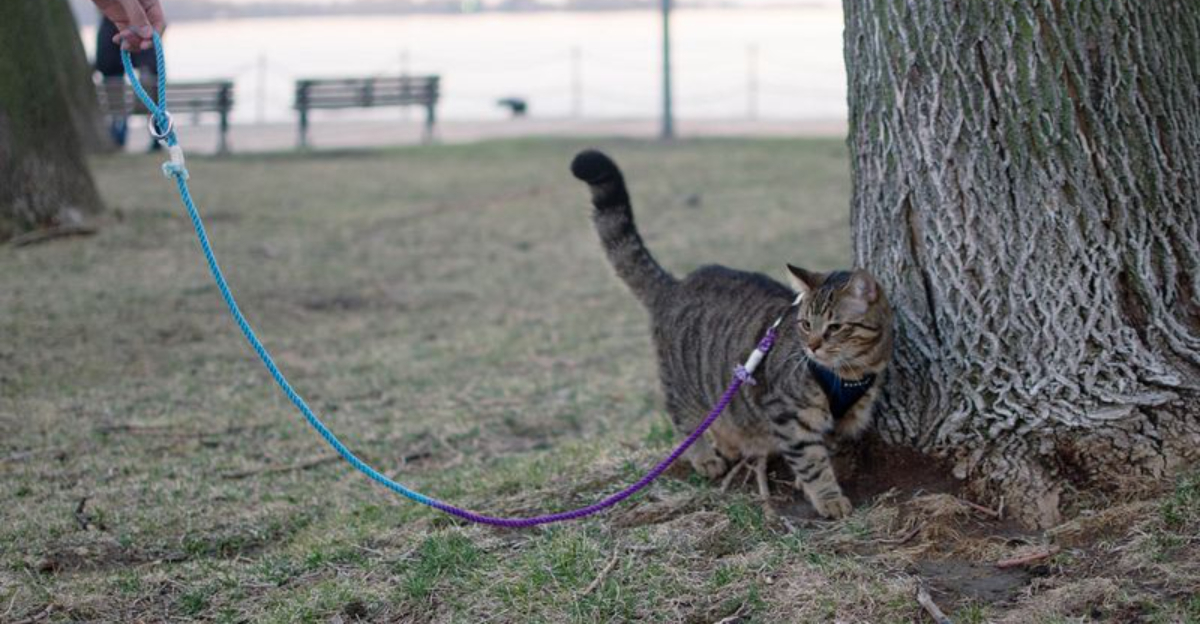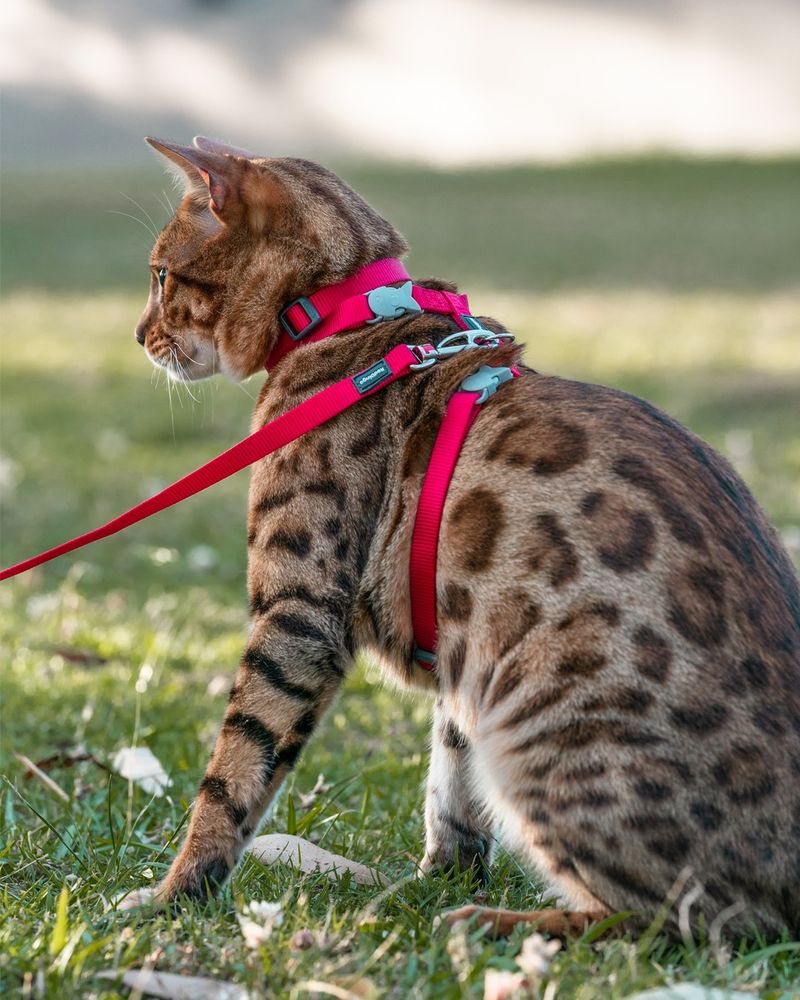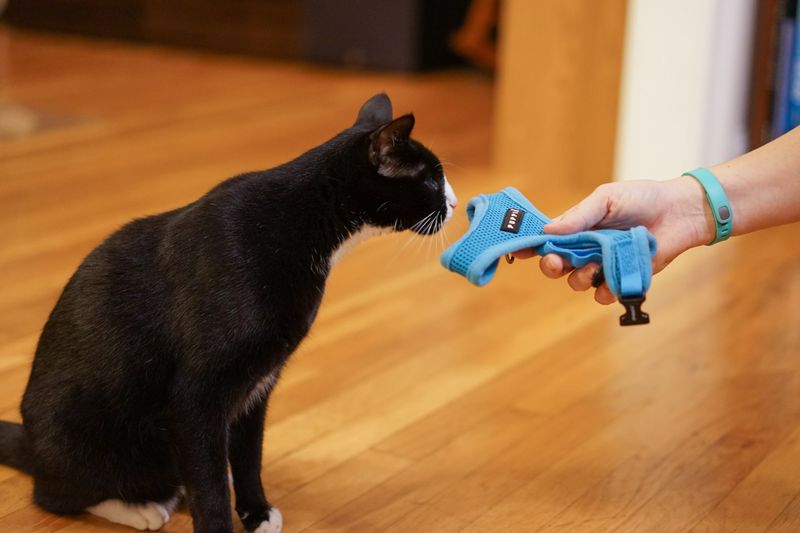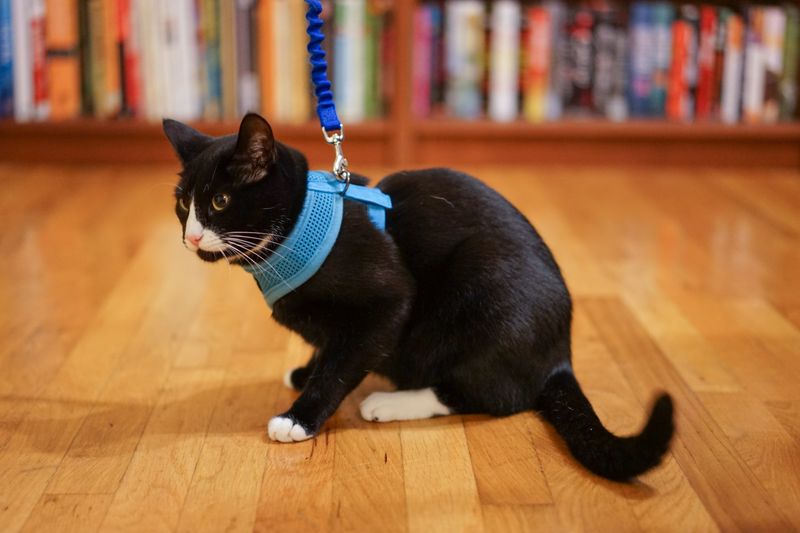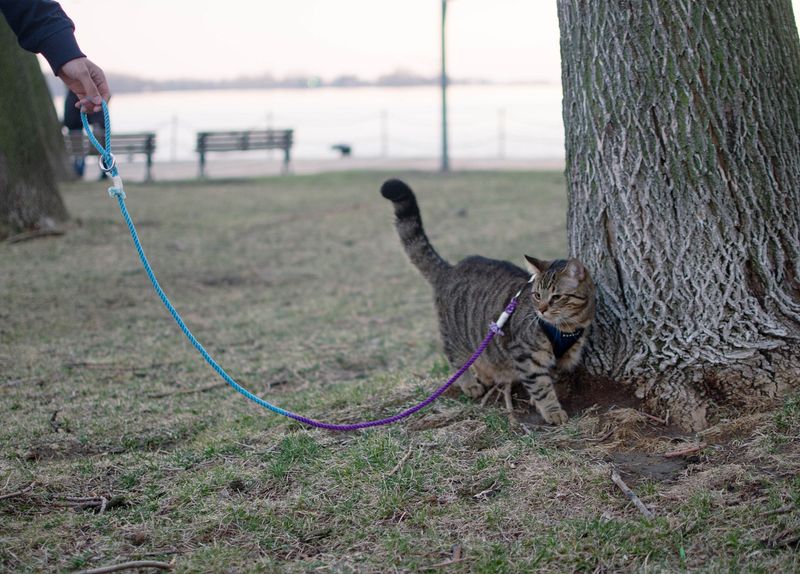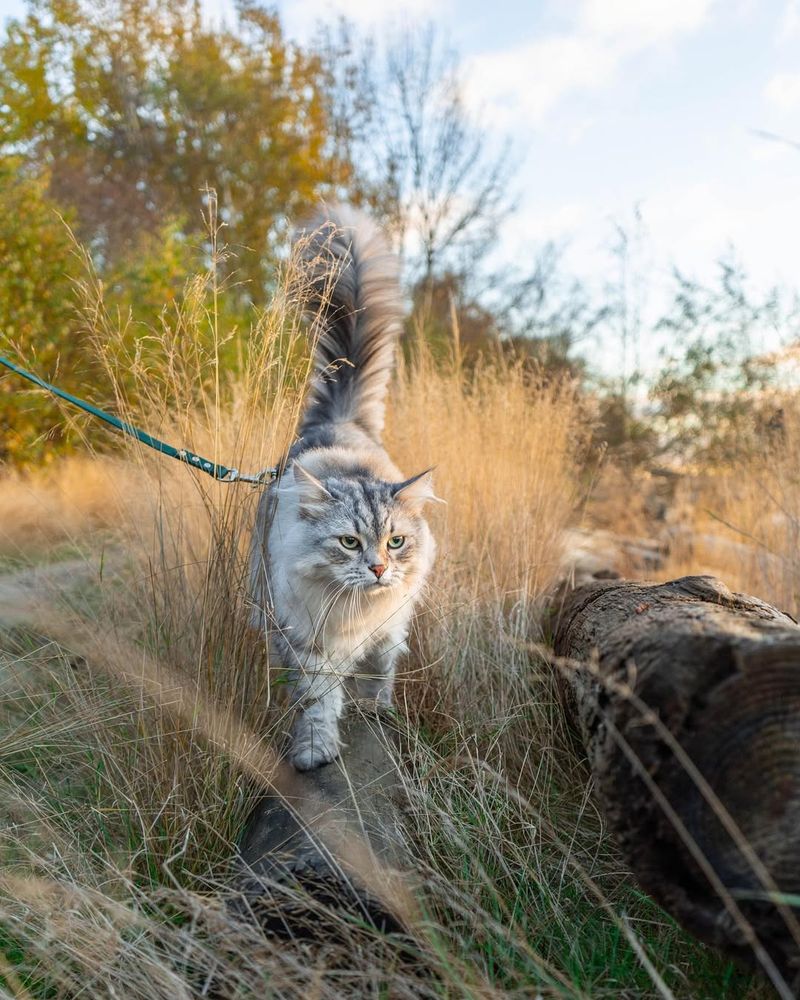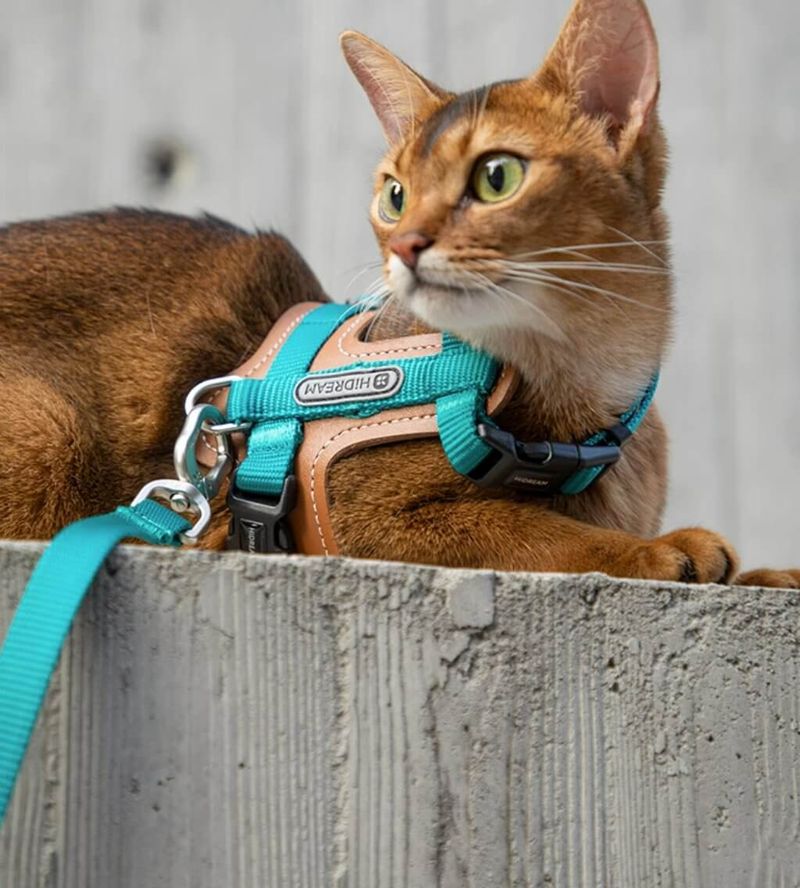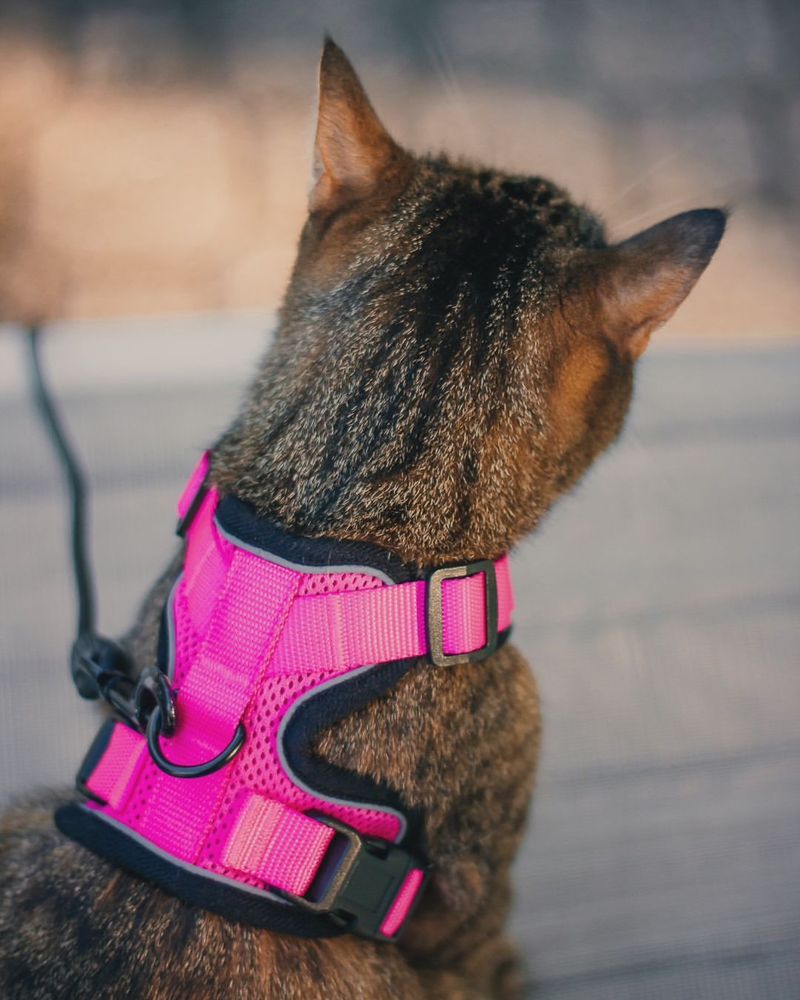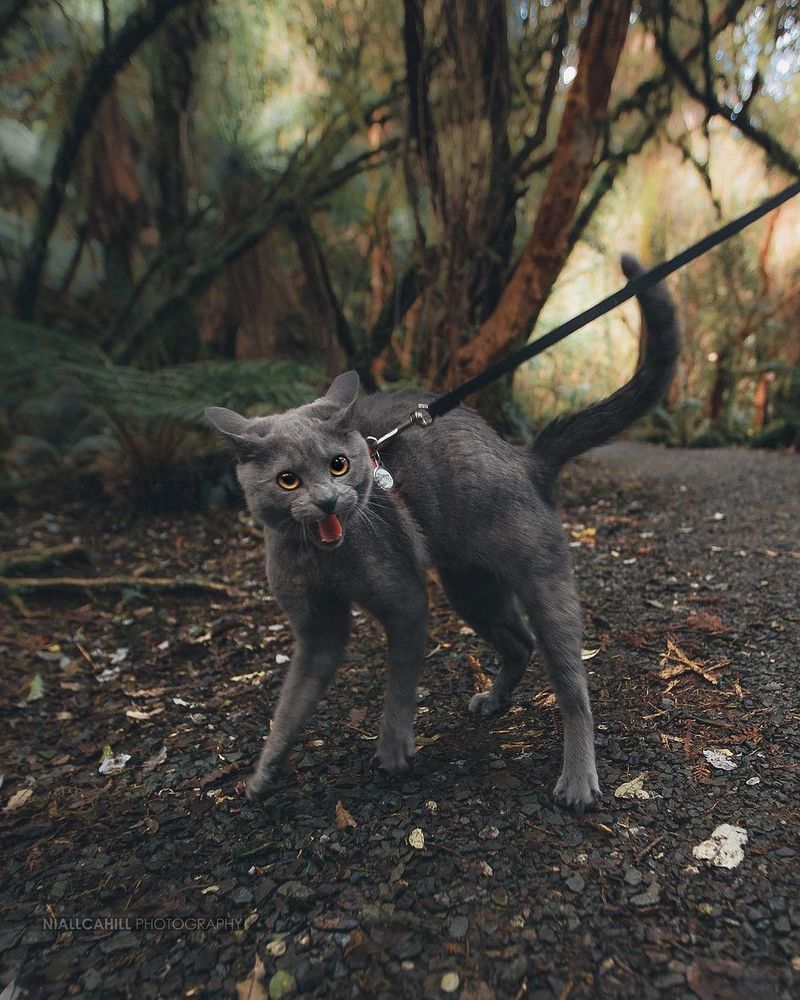📖 Table of Content:
- 1. Choose the Right Harness
- 2. Let Your Cat Get Used to the Harness Indoors
- 3. Introduce the Leash in a Safe Space
- 4. Use Treats and Positive Reinforcement
- 5. Start with Short Indoor Walks
- 6. Pick a Quiet, Safe Outdoor Space
- 7. Let Your Cat Lead the Way
- 8. Be Prepared for Sudden Reactions
- 9. Keep Training Sessions Short and Positive
- 10. Use a Lightweight Leash
- 11. Watch the Weather
- 12. Never Leave Your Cat Unattended
- 13. Avoid High-Traffic Areas
- 14. Respect Your Cat’s Limits
- 15. Be Patient and Consistent
Leash training an indoor cat is a great way to provide them with mental and physical stimulation while expanding their world beyond the home. Many cats are naturally curious, but introducing them to the outdoors safely requires a careful and patient approach. With the right methods, you can help your feline explore new environments while feeling secure and confident.
Transitioning a cat to outdoor leash walks isn’t as simple as putting on a harness and stepping outside. It requires gradual adaptation, positive reinforcement, and an understanding of your cat’s comfort level. By taking small steps and ensuring a stress-free experience, you can make leash training an enjoyable activity for both of you.
Each method prioritizes safety, comfort, and a slow introduction to new surroundings. With consistency and patience, you’ll create positive outdoor experiences that allow your cat to explore confidently while staying protected.
1. Choose the Right Harness
Selecting the perfect harness for your feline is crucial. Opt for a well-fitted, escape-proof harness rather than a collar, as the former provides better safety during training. Vest-style harnesses are particularly recommended for their comfort and security. Ensure it’s specifically designed for cats, avoiding those made for dogs which might not suit a cat’s unique body shape. Introduce the harness indoors, allowing your cat to familiarize themselves with it. This initial step sets the foundation for successful leash training, helping your pet feel secure and comfortable as they embark on this new adventure.
2. Let Your Cat Get Used to the Harness Indoors
Before venturing outside, your cat needs to adjust to wearing a harness indoors. Start with short sessions, allowing them to wear it for brief periods. Reward them with treats and affection to create positive associations. Gradually increase the duration as they grow more comfortable. This process helps reduce anxiety and ensures that your cat feels safe wearing the harness. Patience is key—give your cat time to adapt without pressure. By building a positive relationship with the harness indoors, your cat is more likely to embrace the leash training experience.
3. Introduce the Leash in a Safe Space
Once your cat is comfortable with the harness, introduce the leash in a controlled environment. Allow them to drag it around indoors, supervised, to prevent tangling. This step familiarizes them with the feeling of slight resistance, an essential part of leash training. Use treats to reward calm behavior, reinforcing positive connections. Keep these sessions short and enjoyable, gradually increasing their duration. By practicing indoors first, your cat learns to navigate with the leash confidently, making outdoor outings less intimidating and more enjoyable for both of you.
4. Use Treats and Positive Reinforcement
Treats and praise are powerful tools in leash training. Reward your cat for wearing the harness calmly and responding to leash cues. Choose their favorite treats to reinforce good behavior, maintaining a positive and encouraging atmosphere. Avoid rushing or forcing your cat, as this might induce fear. Instead, gently guide them, offering rewards for small achievements. Consistency and patience are essential—each positive experience builds confidence. This method fosters trust and cooperation, making the overall training process smoother and more enjoyable for both you and your feline companion.
5. Start with Short Indoor Walks
Before stepping outside, practice walking your cat indoors. Begin with short, controlled sessions, using treats to entice them forward. This practice helps them associate the leash with positive experiences, building confidence in a familiar space. Allow your cat to explore at their own pace, rewarding them for progress. Keep the sessions brief to prevent stress, gradually lengthening them as your cat becomes more comfortable. This step lays the groundwork for successful outdoor excursions, ensuring your cat is at ease with the harness and leash before encountering new environments.
6. Pick a Quiet, Safe Outdoor Space
Choosing the right outdoor space is pivotal for a positive experience. Begin in a quiet, secure area with minimal distractions, such as a fenced backyard or enclosed patio. Avoid busy streets or areas with dogs, which may frighten your cat. This initial outdoor exposure helps acclimate them to new smells and sounds in a controlled setting. Keep the sessions short and watch your cat’s reactions closely. By selecting a safe space, you provide a reassuring environment for your cat to explore and enjoy, fostering confidence and curiosity in the great outdoors.
7. Let Your Cat Lead the Way
Cats prefer to explore at their own pace, unlike dogs who follow structured walking patterns. Allow your cat the freedom to sniff and wander, maintaining a gentle hold on the leash. This approach respects their natural curiosity and helps them feel secure. Avoid pulling or directing them forcefully, as this can cause stress or fear. Instead, follow their lead, offering encouragement and rewards for calm behavior. Being patient and attentive to your cat’s cues strengthens your bond and enhances their outdoor experience, making leash walks a more enjoyable activity for both of you.
8. Be Prepared for Sudden Reactions
Outdoor environments can be unpredictable, and cats may react suddenly to unfamiliar stimuli. Watch for signs of stress, such as freezing, crouching, or puffed-up fur. If your cat shows discomfort, give them time to adjust. In cases of panic, calmly pick them up and return indoors. This proactive approach helps build trust and reassures your cat that they are safe. Familiarize yourself with your cat’s body language to anticipate reactions, ensuring their outdoor adventures remain positive and stress-free. It’s all about balancing exploration with comfort and security.
9. Keep Training Sessions Short and Positive
Limit initial outdoor excursions to 5–10 minutes to prevent overwhelming your cat. Gradually increase the duration as they grow more comfortable with their surroundings. Always conclude training on a high note with treats and praise. This reinforces positive associations and encourages your cat to enjoy their time outside. Short, pleasant sessions prevent fatigue and stress, making leash training a rewarding experience. As your cat’s confidence and familiarity with the outdoors grow, you can extend your walks, allowing them to explore more while maintaining a positive, stress-free environment.
10. Use a Lightweight Leash
Choose a lightweight leash, ideally 4–6 feet long, to give your cat freedom to explore without feeling restricted. Avoid retractable leashes, as sudden tension can frighten them. A standard leash with a soft grip works best, providing control while allowing exploration. The right leash enhances comfort and safety during walks. By selecting appropriate equipment, you ensure a positive outdoor experience for your cat. This choice facilitates their natural curiosity, enabling them to enjoy their environment without unnecessary constraints. A well-chosen leash is a simple yet vital part of successful leash training.
11. Watch the Weather
Weather conditions play a significant role in outdoor adventures. Avoid taking your cat outside in extreme temperatures, strong winds, or rain. Cats are sensitive to temperature changes, and hot pavement can harm their paws. Choose mild weather for outings, ensuring a comfortable experience. Check the forecast before planning your walk to avoid sudden changes. This consideration prevents discomfort and keeps your cat safe. Being mindful of the weather ensures that each excursion is pleasant, allowing your feline friend to enjoy their time outdoors without unnecessary stress or risks.
12. Never Leave Your Cat Unattended
Supervision is essential during leash training. Always keep an eye on your cat while they explore. Even if they appear calm, unexpected noises or animals can startle them. Stay close, ready to comfort or assist as needed. This oversight prevents potential dangers and reassures your cat, reinforcing a sense of safety. By remaining attentive, you create a secure environment where your cat can explore confidently. This practice not only ensures their safety but also strengthens your bond, as your cat learns to trust you as their guide in new surroundings.
13. Avoid High-Traffic Areas
For a stress-free outing, choose locations with minimal foot and vehicle traffic. Busy streets, loud noises, and crowded places can overwhelm your cat, causing anxiety. Instead, opt for tranquil gardens, backyards, or parks with little commotion. These quieter settings allow your cat to explore comfortably without being frightened by sudden noises. Observing their comfort levels ensures a positive experience, encouraging curiosity and enjoyment. By avoiding high-traffic areas, you create a peaceful environment conducive to exploration, making your cat’s outdoor adventures more enjoyable and less stressful.
14. Respect Your Cat’s Limits
Every cat is unique, and not all will enjoy walking outdoors. Recognize and respect your cat’s preferences. If they resist leash training despite gradual efforts, don’t force them. Provide indoor enrichment activities to keep them stimulated and happy. Understanding and accepting your cat’s limits promotes trust and well-being. Whether your cat enjoys outdoor adventures or prefers indoor comforts, prioritizing their happiness is key. By respecting their boundaries, you foster a strong bond, ensuring your cat feels loved and secure, whether they explore the outdoors or enjoy the comforts of home.
15. Be Patient and Consistent
Patience and consistency are the cornerstones of successful leash training. Each cat adapts at their own pace, so remain consistent with short training sessions. Provide plenty of positive reinforcement to encourage progress. Patience allows your cat to build confidence, knowing that they are safe and supported. Celebrate small victories with praise and treats, reinforcing their achievements. This approach fosters trust and cooperation, making the training process more enjoyable. By maintaining consistency and understanding, you create a positive environment, allowing your cat to flourish and embrace outdoor adventures confidently.
